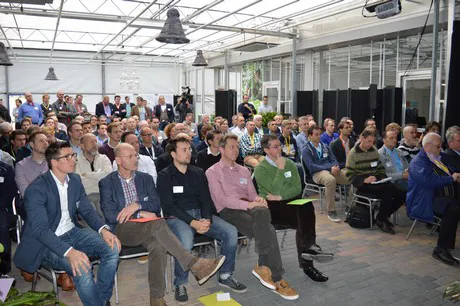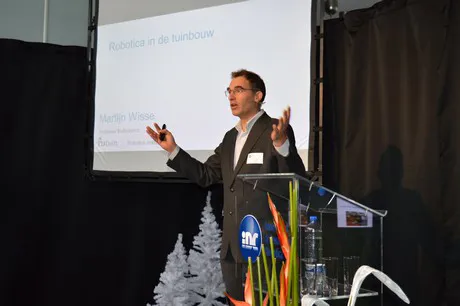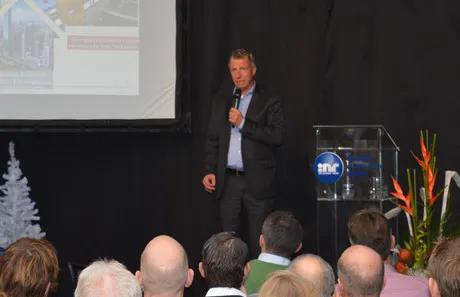
Click here for a photo-report
Vision
Martijn Wisse, professor of robotics at the TU Delft, discussed what scholars are getting to grips with. In a nutshell the biggest challenges are to be found in vision - what robots view through different kind of cameras and interpret - and in performing acts in a non-static environment. For instance, for humans the choice between picking or picking up is not so difficult, but for a machine it certainly is. The product is not uniform, is never twice in the same spot and cannot be damaged. What should not be underestimated is the specific business case: something can in theory do great, but in practice a few adjustments will be required. Doing so can become quite expensive and requires endless patience. Wisse: “projects have often fallen through due to money loss."

Martijn Wisse
Technique and horticulturists
The project Fieldlap SmartFood is a project that hopes to innovate horticulture by binding different parties in the sector together. Tjerk Gorter, one of the organizers, told his audience: "In 2050, when the world population is 9, 10 or 11 billion people, in as estimated 400 or 600 mega cities with all the exact same population, all these people need enough, safe, healthy, reasonable and sustainable food. The Dutch horticulture now has two important assets: technological knowledge - and even more important, growers. People who are 60 hours a day in the greenhouse and know their profession well. Projects abroad often falter, not because of the lack of technology, but because there are no horticulturists available."

Tjerk Gorter
Following on from the talk, the audience was divided into groups and taken from one pitch to the next, in which different companies showed their newest projects, innovations and ideas. Check out the photo-report here
